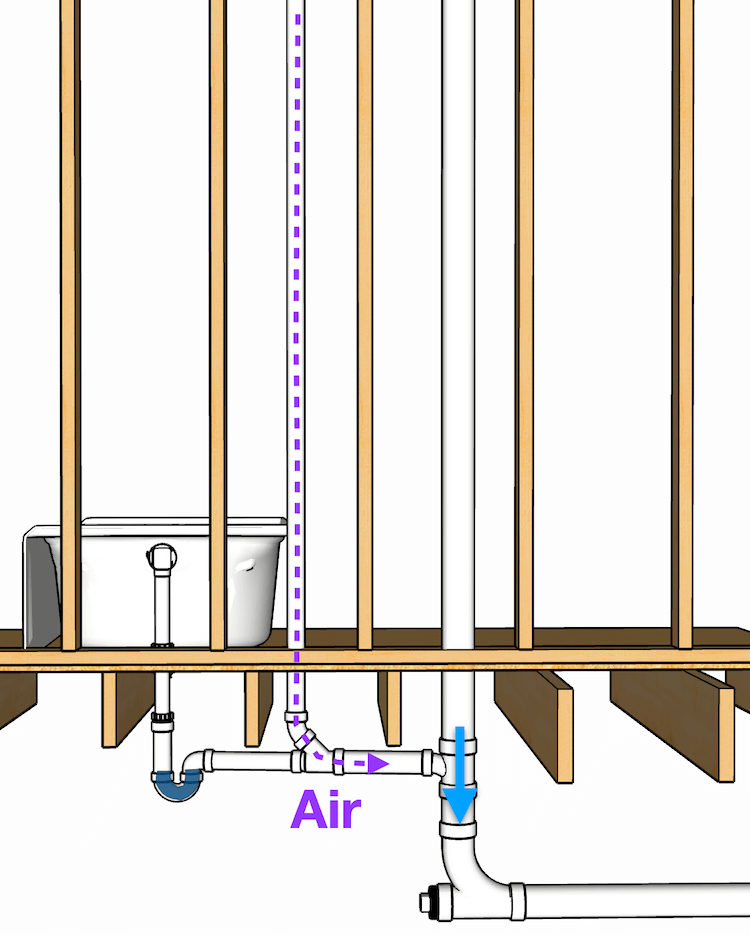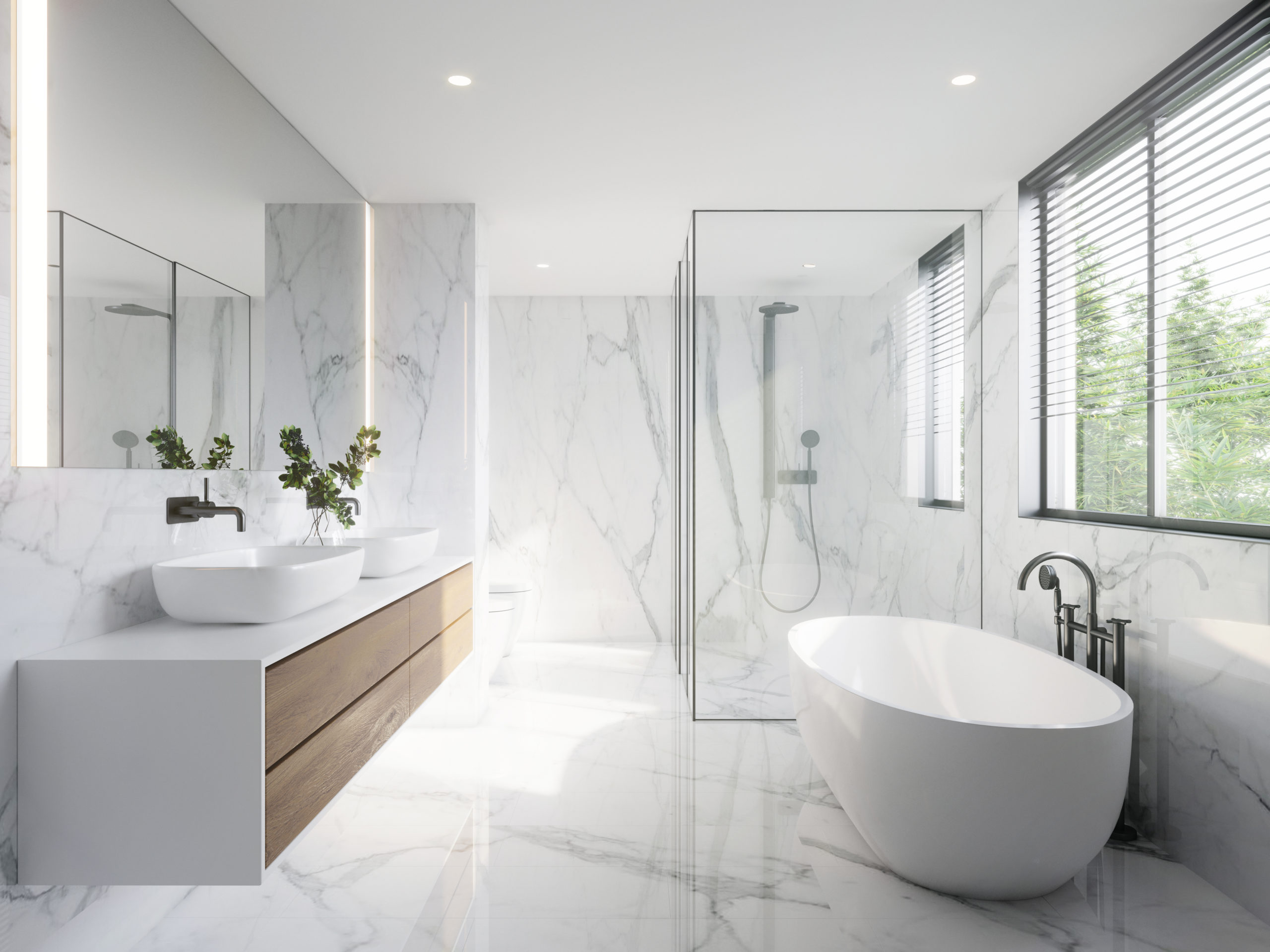Do you find yourself looking for resources around The Upsides of Proper Ventilation in Plumbing Design?

Proper air flow in plumbing systems is usually ignored, yet it is crucial for keeping the functionality and security of your home's plumbing. Air flow aids control atmospheric pressure, prevent the buildup of dangerous gases, and guarantee the efficient elimination of waste. In this guide, we will check out the importance of correct pipes ventilation, exactly how it works, and the advantages it brings to your pipes system.
Recognizing Ventilation in Plumbing
Ventilation in plumbing describes the network of pipes that enable air to flow through the drain system. These vents offer multiple purposes, including regulating air pressure within the pipes, stopping sewage system gases from getting in the home, and aiding in the smooth circulation of wastewater.
Just How Air Flow Works in Pipes Systems
Atmospheric Pressure Guideline
Appropriate ventilation maintains balanced atmospheric pressure within the plumbing system. When water streams through pipes, it displaces air. Without appropriate air flow, this variation can develop adverse stress, leading to slow down drains or siphoning of water from traps, which can trigger unpleasant smells to leak into the home.
Preventing Drain Gas Build-up
One of the most essential functions of plumbing vents is to avoid sewage system gases, such as methane and hydrogen sulfide, from accumulating within the home. These gases can position severe wellness threats and are highly flammable. Vent pipes allow these gases to escape safely outside.
Assisting in Waste Removal
Ventilation aids in the reliable elimination of wastewater by stopping airlocks in the drain system. When air can move freely through the vents, it allows water and waste to stream efficiently via the pipelines, minimizing the danger of blockages and back-ups.
Sorts Of Plumbing Vents
Main Heap Vent
The primary pile vent, also known as the air vent stack, is the key vent in a pipes system. It extends from the main drain align through the roof, enabling gases to run away and fresh air to enter the system.
Branch Vent
Branch vents link to the major stack vent and offer specific components, such as sinks, toilets, and showers. These vents make sure that each component has ample ventilation to function appropriately.
Air Admission Shutoff (AAV).
An Air Admittance Shutoff (AAV) is a one-way valve that permits air to go into the plumbing system without the demand for a standard vent pipe prolonging via the roofing system. AAVs are generally made use of in restorations or areas where mounting a common vent is impractical.
Indications of Poor Air Flow in Plumbing.
Slow Draining Fixtures.
If your sinks, bathtubs, or bathrooms are draining pipes slowly, maybe a sign of bad ventilation. Insufficient air circulation can produce a vacuum cleaner effect, making it tough for water to drain pipes correctly.
Gurgling Appears.
Gurgling sounds coming from drains pipes are often a result of air being sucked with water catches due to negative pressure in the pipes. This is a clear sign of not enough air flow.
Unpleasant Smells.
Sewage system odors inside your home are a red flag that your plumbing system is not correctly ventilated. This might indicate that sewage system gases are not being adequately vented outside, causing potentially harmful problems.
Usual Air Flow Blunders.
Poor Vent Sizing.
Making use of small vent pipes can result in poor air circulation and stress imbalances in the system. It's important to utilize vents that satisfy the specific needs of your pipes system.
Improper Vent Placement.
Positioning vents as well far from the components they serve can decrease their performance. Correct positioning makes sure that air can stream freely and efficiently via the system.
Disregarding Code Requirements.
Building regulations offer certain standards for pipes ventilation. Ignoring these codes can result in a system that stops working to function appropriately and may result in expensive fixings or health hazards.
Benefits of Appropriate Ventilation.
Enhanced System Performance.
Effectively aerated plumbing systems operate more efficiently, with fewer blockages, faster draining, and less strain on the pipes. This efficiency extends the life expectancy of the plumbing system.
Improved Air Quality.
By avoiding sewer gases from entering your home, proper air flow adds to better indoor air quality, making your living environment healthier and much more comfortable.
Avoiding Water Damage.
Sufficient ventilation helps avoid water from being siphoned out of traps, which can lead to sewage system gases entering the home and creating water damage with time.
Actions to Make Sure Correct Air Flow.
Consulting Plumbing Codes.
Always speak with neighborhood pipes codes when creating or customizing your plumbing system. These codes supply the needed standards for appropriate airing vent and ensure your system fulfills safety criteria.
Normal Examination and Maintenance.
Normal examinations can assist determine possible air flow concerns prior to they come to be significant troubles. Upkeep jobs, such as cleansing air vent pipes and checking for blockages, are vital for keeping the system in good working order.
Specialist Installment.
For new installments or major modifications, it's important to work with a professional plumbing. They have the competence to make sure the ventilation system is correctly designed and mounted according to code.
Final thought.
Appropriate air flow is a crucial element of any pipes system, ensuring that it works successfully and safely. By comprehending the relevance of ventilation, acknowledging the indicators of inadequate ventilation, and taking steps to preserve your system, you can stop pricey concerns and protect your home's air top quality.
4 Things You Should Know About Your Plumbing Vents
What Plumbing Vents Are
Also called a vent stack, a plumbing vent is a vertical pipe attached to your drain line that runs through your roof. The plumbing vent pipe, or plumbing air vent, removes gas and odors from your plumbing system and allows fresh air to enter the pipes, helping the water to flow out of the drain pipes.
What Plumbing Vents Do
Plumbing vents have two basic functions. One of which is to allow unpleasant smelling wastewater and sewer gasses to escape your plumbing system instead of entering your home. Plumbing vent pipes are typically located on roofs, away from windows, to ensure the fumes exit the home completely.
The other function of the plumbing vent is to move fresh air into your plumbing system. This helps move water through every plumbing fixture in your house, like toilets and sink drains. Think of the way in which you need to let a little air into the bottle as you pour soda in order to make the drink flow smoothly.
Different Types of Plumbing Vents
True vent: This is the most common vent option. In simplest terms, a true vent is a vertical pipe attached to your drain line that exits through the roof. They often function as the main vent that other fixtures can connect to. Re-vent pipe or auxiliary vent: Attached to the drain line near specific plumbing fixtures, re-vent pipes run up and over to connect to the main vent. Common vent: Two plumbing fixtures installed on opposite sides of a wall are typically tied into the vent stack using something known as a sanitary cross. Wet vent: This venting option operates as a drain pipe and a vent at the same time. Wet vent drainage systems drain water from one fixture while venting the air from another. Although they’ve been used for over 100 years, wet vent systems have only recently been added to the plumbing code in many areas. If you’re planning on installing one in a bathroom remodel, make sure you check your local code prior to construction. Loop vent: For free-standing fixtures like kitchen island sinks, loop vents are ideal. These vent pipes run under the floor, rise from the P-trap, and create a loop inside the cabinet sink. Air admittance valve: An AAV is a one-way mechanical valve typically installed at the site of the plumbing fixture. AAVs allow venting to occur without having to tie into a larger venting system. They’re ideal for venting fixtures where you aren’t able to easily connect to an existing vent system. Common Plumbing Vent Issues
Although vent pipes typically don’t have water flowing through them, they’re still subject to many typical plumbing issues. For example, clogs are one of the most common problems associated with sewer vent pipes. If your vent pipe gets clogged, all of your plumbing fixtures tied into the vent stack will be affected.
A sink with a slow drain that bubbles and gurgles or a strong sewage smell around your toilet are both indicators that your toilet vent pipe is clogged. Because most vent pipes exit through the roof, old leaves, twigs or even a bird’s nest could be clogging the pipe.
Clogs in your vent pipe system cause a buildup of negative pressure, meaning that water won’t be able to flow out of your home very well. It’s similar to putting your finger over the opening of a straw to trap water inside. When you remove your finger, the water is able to flow out of the straw.
If you suspect you have any blockage in your vent, make sure you have a professional come examine the situation. Left unchecked, a blocked air vent can lead to other costly repairs, like leaks and sediment buildup.
Under Pressure
Pipe vents are essential aspects of a home’s plumbing system. Owning a home means learning about all sorts of things you never put much thought into before. But by understanding as much as you can about the important systems of your home, you can keep those budgets intact and those anxiety levels low.
https://www.homeserve.com/en-us/blog/home-improvement/plumbing-vents/

As an enthusiastic reader on Why Plumbing Air Vents Are Important, I assumed sharing that information was worthwhile. So long as you liked our blog posting if you please make sure you remember to pass it around. I thank you for reading our article about Essential Plumbing Vent Pipes: Understanding Their Role.
Explore